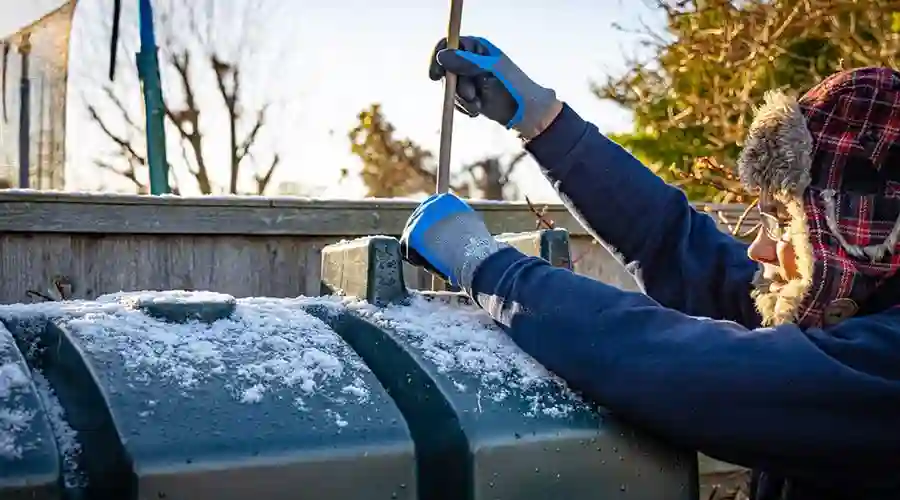As homeowners grapple with aging infrastructure, the process of oil tank removal becomes a central concern. Decommissioning an oil tank poses various challenges, from environmental considerations to navigating regulatory landscapes. In this article, we’ll explore the common dilemmas faced during oil tank decommissioning and present solutions to ensure a smooth and responsible removal process.
Environmental Concerns: Balancing Conservation and Removal
One of the primary decommissioning dilemmas revolves around environmental concerns. Oil tanks, if not removed properly, can lead to soil and groundwater contamination. Balancing conservation efforts with the removal process is essential. A solution to this dilemma involves proactive environmental assessments before removal, coupled with efficient and eco-friendly disposal methods.
Regulatory Compliance: Navigating Legal Waters
Navigating the regulatory landscape is a significant challenge in oil tank decommissioning. Homeowners must comply with local and state regulations governing removal procedures, safety standards, and permitting requirements. The solution lies in thorough research and consultation with professionals who are well-versed in regulatory requirements. Keeping abreast of changes in legislation ensures compliance throughout the decommissioning process.
Property Impact: Minimizing Disruption
Decommissioning an oil tank can disrupt the property and its surroundings. Excavation, equipment, and potential remediation efforts may impact the landscape. Minimizing disruption involves strategic planning, selecting the right time for removal, and coordinating with professionals to ensure a streamlined and efficient process. Clear communication with neighbors and planning for property restoration post-removal further addresses this dilemma.
Financial Considerations: Weighing Costs and Benefits
The financial aspect of oil tank decommissioning is a common challenge for homeowners. Removal costs, including excavation, disposal, and potential remediation, can be significant. However, weighing these costs against the long-term benefits is crucial. A solution involves considering potential savings from transitioning to alternative heating sources and factoring in the long-term costs associated with environmental damage if the tank is left in place.
Risk of Contamination: Mitigating Environmental Impact
The risk of contamination during oil tank decommissioning is a pressing concern. The process of removing the tank and associated components may uncover leaks or spills, leading to soil and groundwater contamination. Mitigating environmental impact involves implementing stringent safety measures during removal, conducting thorough environmental assessments, and having a remediation plan in place in case contamination is discovered.
Property Resale Value: Enhancing Market Appeal
For homeowners looking to sell their property, the presence of an old oil tank can impact resale value. Solving this dilemma involves proactive removal before putting the property on the market. Removal enhances market appeal, alleviates potential buyer concerns, and may even increase the property’s value. Clear documentation of the decommissioning process can be presented to potential buyers, providing transparency and assurance.
Choosing Between Removal and Abandonment: Weighing the Options
Homeowners often face the dilemma of whether to completely remove the oil tank or opt for abandonment in place. Removal is the preferred option for avoiding potential environmental hazards, but it comes with higher costs. Abandonment involves cleaning the tank, filling it with an inert material, and sealing it. Weighing the options requires considering the long-term impact, regulatory compliance, and potential future property plans.
Public Perception: Addressing Community Concerns
Oil tank decommissioning can draw attention from the community, leading to concerns about safety and environmental impact. Addressing public perception involves open communication with neighbors, providing information about the removal process, and assuring them of the safety measures in place. Demonstrating a commitment to responsible decommissioning practices can positively influence community perception.
Future Property Plans: Considering Long-Term Vision
Homeowners often grapple with the dilemma of how oil tank decommissioning aligns with their long-term property plans. If future renovations or property expansions are on the horizon, removal becomes a strategic choice. Considering long-term vision involves assessing how the decommissioning process fits into broader property goals, ensuring that the decision aligns with future plans.
Professional Guidance: Expert Solutions
The most effective solution to the dilemmas of oil tank decommissioning lies in seeking professional guidance. Certified tank removal experts bring expertise, experience, and knowledge of industry best practices. They can navigate the regulatory landscape, address environmental concerns, and provide strategic solutions to challenges faced during the decommissioning process. Engaging professionals ensures a smooth and responsible decommissioning journey.
Conclusion:
Decommissioning dilemmas during oil tank removal require thoughtful consideration and strategic solutions. From addressing environmental concerns to navigating regulatory compliance, homeowners can mitigate challenges by seeking professional guidance, conducting thorough assessments, and aligning the decommissioning process with long-term property plans. By adopting a proactive and informed approach, homeowners can successfully navigate the complexities of oil tank decommissioning, ensuring a responsible and environmentally conscious removal process.








